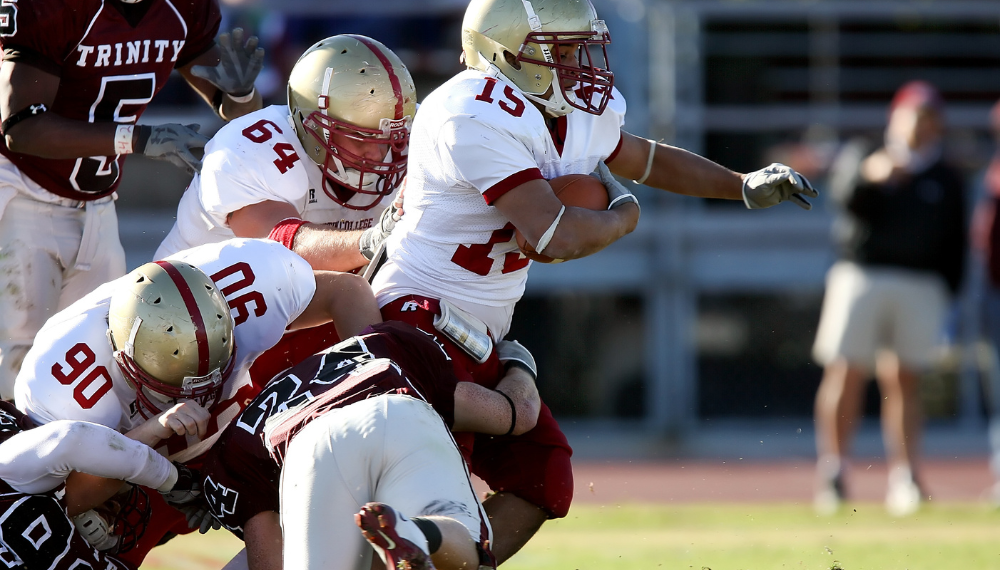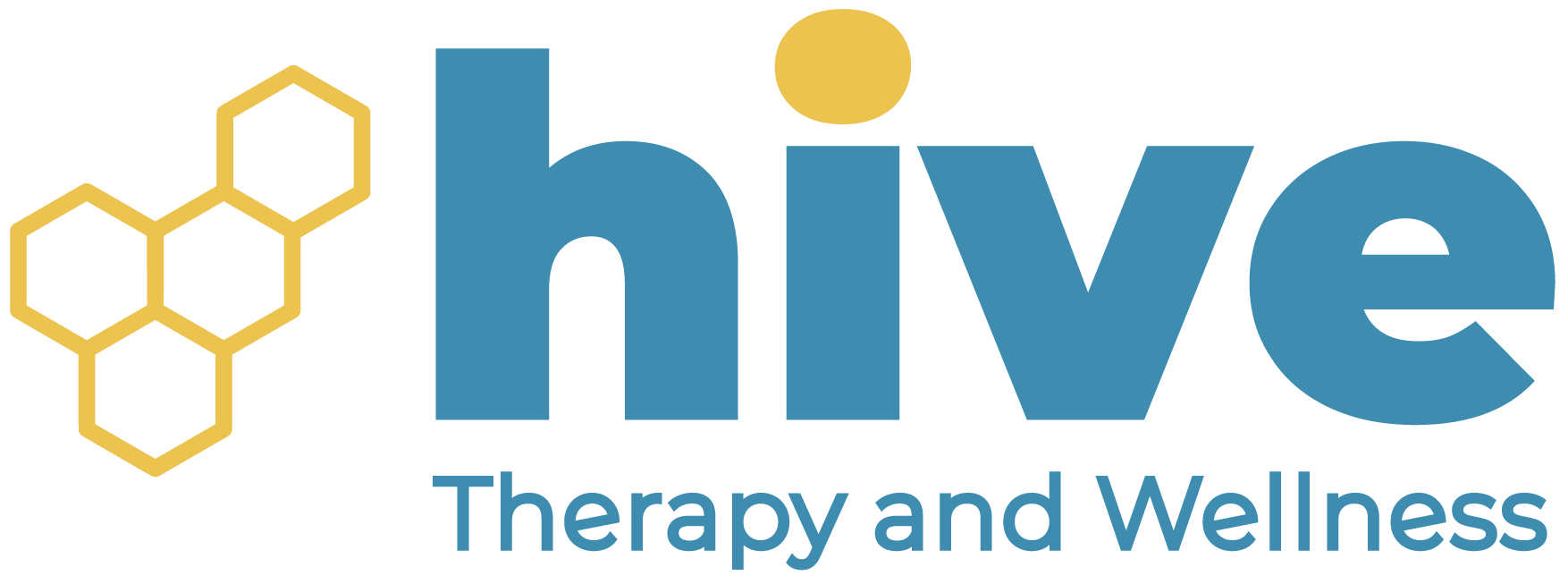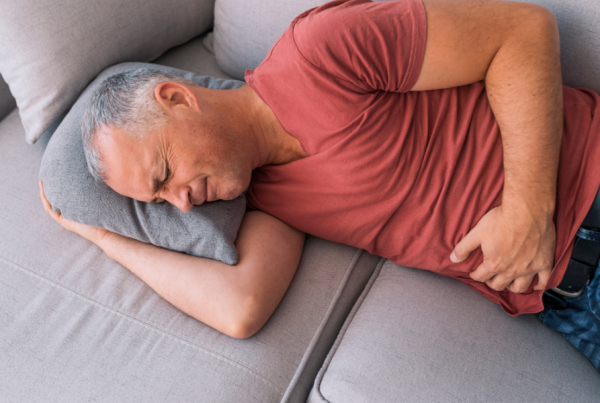Sports-Related Pelvic Injuries
Move Better. Live Fuller. Your Wellness Journey Starts Here.
Schedule a FREE Discovery Call!
About Sports-Related Pelvic Injuries
Many people don’t realize how much their pelvis supports their athletic abilities and movements during sports. Practically any sport you can think of relies on the pelvis, hips, and pelvic floor muscles. These structures allow for balance, stability, movement, endurance, and power during a wide variety of sports—whether you are playing recreationally or professionally.
The pelvis and pelvic floor muscles are essential even to daily life outside of sports, as they allow you to use the restroom, enjoy sexual activities, and perform movements like walking, running, sitting, jumping, lifting, and more.

When these structures are in poor health, they can create symptoms even for sedentary individuals, including incontinence, constipation, painful sex, and much more. The pelvic structures experience even more demanding movements, pressure, and straining for those who play sports—which makes these individuals much more susceptible to pelvic floor dysfunction and pelvic injuries.
Types of Pelvic Injuries
Pelvic injuries are not simply limited to fractures or accidents causing direct impact to the pelvis. In reality, sports-related pelvic injuries can refer to a wide variety of conditions affecting the pelvic floor, lower back, hips, abdominals, sacroiliac joints, and other internal or surrounding structures. This can include fractures, muscle strains, tears, misalignment, hernias, pelvic floor dysfunction, and more.
These injuries can create symptoms of pain, dysfunction, or instability in any of the pelvic structures—which will impact your comfort, mobility, and function. Symptoms can vary depending on the individual injury, but may cause widespread or localized pain, pain that worsens with movement, stiffness, incontinence, and other symptoms.
Let’s explore some examples of common sports-related pelvic injuries:
- Muscle strains: Muscle strain can create pain, tightness, stiffness, and dysfunction in different parts of the body. Some examples of muscle strain that commonly occurs with sports includes pelvic floor muscle strain, adductor strain, hip flexor strain, gluteal muscle strain, groin strain, or lumbar muscle strains.
- Joint injuries: The hips and joints of the pelvis are frequently subjected to pressure and straining during sports, which can create tears or dysfunction. This may include hip labral tears, sacroiliac joint dysfunction, pubic symphysis dysfunction, abnormal bone growths, and more.
- Nerve-related pain: Nerve entrapment can create weakness and pain, depending on the location of nerve compression and the nerve affected. In sports-related injuries, nerve entrapment often occurs in areas affecting the groin, perineum, or general pelvic region.
- Fractures: One obvious risk of playing sports is experiencing direct impact, which may create a fracture in any area of the pelvis. These injuries can include stress fractures from overuse, avulsion fractures, and more.
- Other: Sports injuries can include other types of conditions, such as hernias, tendinitis, bursitis, tendon dysfunction, or tailbone pain.
What Causes Pelvic Injuries?
We’ve discussed that sports puts extreme pressure, straining, and exertion on your pelvic structures. However, the underlying cause of the condition can vary not only by sport, but also by the individual. Below, we’ve outlined some specific factors that can lead to a sports-related pelvic injury:
Overuse and repetitive strain: High-impact sports that involve running, jumping, or other forceful movements may strain the hips, pelvic floor, and more. In general, repetitive movements during any sport can lead to overuse injuries.
Muscle imbalances: Imbalances in the pelvic muscles, hips, or surrounding structures such as the core and back can create pressure and stress on the pelvis. These imbalances can create injuries through overreliance on singular muscle groups during activity.
Poor posture or form: Similarly to muscle imbalances, poor posture can create strain or misalignment that increases your risk of injury. When high impact movements are performed repeatedly with poor form, there is a high risk of injury!
Direct impact or trauma: Tears, dysfunction, or pain can occur after impact-related injuries, such as from collision or falls.
Pelvic floor dysfunction: Tight or weak pelvic floor muscles are unable to sufficiently support sports activities. For example, tight muscles can become strained easily from the pressures of sports, whereas a weak pelvic floor can decrease stability and increase the risk of injury.
Poor flexibility: Flexibility and mobility is very important in supporting the extreme movements and pressures of sports, regardless of which sport you play. Individuals who are sedentary or who do not properly condition their body for sports are more likely to experience injury.
Physical Therapy for Sports-Related Pelvic Injuries
Physical therapy plays an incredibly important role in supporting those who have experienced pelvic injuries from sports. It allows individuals to recover efficiently, regain function, and return to their sport with a lower risk of complications or future injury.
Pelvic floor physical therapists are experts of the body! They can identify underlying causes of your condition and provide treatment that will relieve your symptoms and restore muscle function. However, physical therapy doesn’t simply stop there!
The experts at Hive Therapy and Wellness want you to feel more than prepared to get out there, live comfortably, and safely continue your sport. That’s why they’ll work to improve the strength and flexibility of your muscles to further enhance performance and function, as well as provide education to minimize the likelihood of future injury.
Not to mention, each patient who receives care from Hive Therapy and Wellness can expect an individualized and holistic plan of care that focuses on their unique needs and condition. In other words, your treatment is tailored to your specific injury and sport—allowing you to get the most out of your physical therapy experience.
To relieve your symptoms and help you regain a better quality of life, your Hive physical therapist will start with an evaluation of your current condition, muscle balance, flexibility, form, and other aspects pertaining to your pelvic health and unique sport. They’ll curate a care plan based on your needs, which could include any of the following treatments:
Pain Management
Pelvic injuries can range from mild dysfunction to a more extreme injury, such as those requiring surgery. In any of these cases, your physical therapist can provide pain relieving treatments as needed. These pain relieving treatments can include methods such as temperature therapy, electrical stimulation, or manual therapy.
Manual therapy refers to techniques that manipulate and mobilize tissues such as your nerves, muscles, ligaments, and so on. These treatments not only relieve pain from tight, tense muscles or nerve irritation, but they can also encourage better muscle and joint function! Manual therapy can include hands-on techniques, dry needling, tissue scraping, cupping, and other methods.
These techniques can target painful trigger points and release tight muscles. Some types of manual therapy can even be helpful for scar tissue! Individuals who experience a surgery or injury may have scar tissue that can cause restriction and discomfort. Manual therapy is great for manipulating your scar tissue and improving its mobility!
Improving Strength, Flexibility, and Coordination
As mentioned earlier, physical therapists are experts of the body. They’re able to identify areas of weakness or imbalance, and curate a routine to strengthen your body as needed. For pelvic injuries, this can include strengthening your core, hips, lower back, or pelvic floor muscles, as all of these areas are very interconnected! Having good muscle balance and flexibility for these areas will restore function, alleviate pain, and prevent future injury.
To start, your physical therapist will work to release tightness in these areas and improve mobility through stretching techniques. They’ll correct any harmful movement habits you may have, and teach you to engage the correct muscles during exercise. This can include learning how to properly coordinate your muscle groups—after all, your core, pelvic floor, lower back, glutes, or other muscle groups must coordinate to support a variety of movements!
As you learn to coordinate and engage your muscles during movements, your physical therapist will begin to incorporate strengthening exercises based on your unique needs, stage of recovery, and the physical demands of the sport you play. You can expect to engage in stability exercises and other curated activities that will not only enhance your health, but also your performance—so you can get back to enjoying your sport to the best of your abilities!
Pelvic Floor Training
The pelvic floor is another group of muscles that will need strengthening and other forms of care. As mentioned before, these muscles play a massive role in practically any sport. They coordinate with your core, back, and hips to allow for powerful movements and even daily functions.
Your body heavily relies on your pelvis and pelvic floor to provide support and stability throughout every movement—meaning these areas are very prone to dysfunction and will need special care after any pelvic injury. Additionally, keeping your pelvic floor in good health can lower your risk of pelvic injuries and even improve sports performance.
Your physical therapist will examine your pelvic floor for any weakness, tightness, or inflexibility, and access your level of pelvic floor coordination. They’ll help you gain awareness and control of these muscles through neuromuscular re-education and biofeedback, which will allow you to coordinate these muscles during activities or exercises. You’ll be able to actively relax these muscles or engage them in strengthening exercises, which your physical therapist will guide you through.
These curated pelvic floor treatments will enhance your pelvic floor muscle function and overall pelvic stability, reducing your risk of injury and improving your performance during your sport!
Education
Outside of physical treatments, your physical therapist is able to provide valuable education on managing your injury and preventing future complications. This can include learning things such as:
- Activity modifications to reduce strain on your injury as you recover.
- Proper form for daily posture and sports-related postures.
- Exercises and stretches to perform at home.
- Proper breathing techniques to enhance intra-abdominal pressure.
- Proper techniques for warming up and cooling down for sports.
- Sports-specific form and techniques, such as movement mechanics for lifting.
The providers at Hive Therapy and Wellness care about your recovery and comfort, and strive to provide treatment that is comprehensive and holistic. Therefore, they are very open to coordinating with your other health or sports professionals as needed. This can ensure that your treatment encapsulates all of your needs, and best supports your overall health goals.
As mentioned before, your treatment plan will be curated to your individual injury, recovery process, and sport. This tailored care plan may include any of the following treatment methods:
- Neuromuscular re-education
- Manual therapy
- Exercise prescription
- Dry needling
- Cupping
- Tissue scraping
- Behavioral modifications
- Therapeutic activities
- Electrical muscle stimulation
- Spinal manipulation
- Therapeutic modalities
- Biofeedback
Many people don’t realize how much their pelvis supports their athletic abilities and movements during sports. Practically any sport you can think of relies on the pelvis, hips, and pelvic floor muscles.
These structures allow for balance, stability, movement, endurance, and power during a wide variety of sports—whether you are playing recreationally or professionally.
The pelvis and pelvic floor muscles are essential even to daily life outside of sports, as they allow you to use the restroom, enjoy sexual activities, and perform movements like walking, running, sitting, jumping, lifting, and more.
When these structures are in poor health, they can create symptoms even for sedentary individuals, including incontinence, constipation, painful sex, and much more.
The pelvic structures experience even more demanding movements, pressure, and straining for those who play sports—which makes these individuals much more susceptible to pelvic floor dysfunction and pelvic injuries.
Types of Pelvic Injuries
Pelvic injuries are not simply limited to fractures or accidents causing direct impact to the pelvis. In reality, sports-related pelvic injuries can refer to a wide variety of conditions affecting the pelvic floor, lower back, hips, abdominals, sacroiliac joints, and other internal or surrounding structures.
This can include fractures, muscle strains, tears, misalignment, hernias, pelvic floor dysfunction, and more.
These injuries can create symptoms of pain, dysfunction, or instability in any of the pelvic structures—which will impact your comfort, mobility, and function.
Symptoms can vary depending on the individual injury, but may cause widespread or localized pain, pain that worsens with movement, stiffness, incontinence, and other symptoms.
Let’s explore some examples of common sports-related pelvic injuries:
- Muscle strains: Muscle strain can create pain, tightness, stiffness, and dysfunction in different parts of the body. Some examples of muscle strain that commonly occurs with sports includes pelvic floor muscle strain, adductor strain, hip flexor strain, gluteal muscle strain, groin strain, or lumbar muscle strains.
- Joint injuries: The hips and joints of the pelvis are frequently subjected to pressure and straining during sports, which can create tears or dysfunction. This may include hip labral tears, sacroiliac joint dysfunction, pubic symphysis dysfunction, abnormal bone growths, and more.
- Nerve-related pain: Nerve entrapment can create weakness and pain, depending on the location of nerve compression and the nerve affected. In sports-related injuries, nerve entrapment often occurs in areas affecting the groin, perineum, or general pelvic region.
- Fractures: One obvious risk of playing sports is experiencing direct impact, which may create a fracture in any area of the pelvis. These injuries can include stress fractures from overuse, avulsion fractures, and more.
- Other: Sports injuries can include other types of conditions, such as hernias, tendinitis, bursitis, tendon dysfunction, or tailbone pain.
We’ve discussed that sports puts extreme pressure, straining, and exertion on your pelvic structures. However, the underlying cause of the condition can vary not only by sport, but also by the individual.
Below, we’ve outlined some specific factors that can lead to a sports-related pelvic injury:
Overuse and repetitive strain: High-impact sports that involve running, jumping, or other forceful movements may strain the hips, pelvic floor, and more. In general, repetitive movements during any sport can lead to overuse injuries.
Muscle imbalances: Imbalances in the pelvic muscles, hips, or surrounding structures such as the core and back can create pressure and stress on the pelvis. These imbalances can create injuries through overreliance on singular muscle groups during activity.
Poor posture or form: Similarly to muscle imbalances, poor posture can create strain or misalignment that increases your risk of injury. When high impact movements are performed repeatedly with poor form, there is a high risk of injury!
Direct impact or trauma: Tears, dysfunction, or pain can occur after impact-related injuries, such as from collision or falls.
Pelvic floor dysfunction: Tight or weak pelvic floor muscles are unable to sufficiently support sports activities. For example, tight muscles can become strained easily from the pressures of sports, whereas a weak pelvic floor can decrease stability and increase the risk of injury.
Poor flexibility: Flexibility and mobility is very important in supporting the extreme movements and pressures of sports, regardless of which sport you play. Individuals who are sedentary or who do not properly condition their body for sports are more likely to experience injury.
Physical therapy plays an incredibly important role in supporting those who have experienced pelvic injuries from sports. It allows individuals to recover efficiently, regain function, and return to their sport with a lower risk of complications or future injury.
Pelvic floor physical therapists are experts of the body! They can identify underlying causes of your condition and provide treatment that will relieve your symptoms and restore muscle function. However, physical therapy doesn’t simply stop there!
The experts at Hive Therapy and Wellness want you to feel more than prepared to get out there, live comfortably, and safely continue your sport.
That’s why they’ll work to improve the strength and flexibility of your muscles to further enhance performance and function, as well as provide education to minimize the likelihood of future injury.
Not to mention, each patient who receives care from Hive Therapy and Wellness can expect an individualized and holistic plan of care that focuses on their unique needs and condition.
In other words, your treatment is tailored to your specific injury and sport—allowing you to get the most out of your physical therapy experience.
To relieve your symptoms and help you regain a better quality of life, your Hive physical therapist will start with an evaluation of your current condition, muscle balance, flexibility, form, and other aspects pertaining to your pelvic health and unique sport.
They’ll curate a care plan based on your needs, which could include any of the following treatments:
Pain Management
Pelvic injuries can range from mild dysfunction to a more extreme injury, such as those requiring surgery. In any of these cases, your physical therapist can provide pain relieving treatments as needed.
These pain relieving treatments can include methods such as temperature therapy, electrical stimulation, or manual therapy.
Manual therapy refers to techniques that manipulate and mobilize tissues such as your nerves, muscles, ligaments, and so on.
These treatments not only relieve pain from tight, tense muscles or nerve irritation, but they can also encourage better muscle and joint function! Manual therapy can include hands-on techniques, dry needling, tissue scraping, cupping, and other methods.
These techniques can target painful trigger points and release tight muscles. Some types of manual therapy can even be helpful for scar tissue!
Individuals who experience a surgery or injury may have scar tissue that can cause restriction and discomfort. Manual therapy is great for manipulating your scar tissue and improving its mobility!
Improving Strength, Flexibility, and Coordination
As mentioned earlier, physical therapists are experts of the body. They’re able to identify areas of weakness or imbalance, and curate a routine to strengthen your body as needed.
For pelvic injuries, this can include strengthening your core, hips, lower back, or pelvic floor muscles, as all of these areas are very interconnected! Having good muscle balance and flexibility for these areas will restore function, alleviate pain, and prevent future injury.
To start, your physical therapist will work to release tightness in these areas and improve mobility through stretching techniques. They’ll correct any harmful movement habits you may have, and teach you to engage the correct muscles during exercise.
This can include learning how to properly coordinate your muscle groups—after all, your core, pelvic floor, lower back, glutes, or other muscle groups must coordinate to support a variety of movements!
As you learn to coordinate and engage your muscles during movements, your physical therapist will begin to incorporate strengthening exercises based on your unique needs, stage of recovery, and the physical demands of the sport you play.
You can expect to engage in stability exercises and other curated activities that will not only enhance your health, but also your performance—so you can get back to enjoying your sport to the best of your abilities!
Pelvic Floor Training
The pelvic floor is another group of muscles that will need strengthening and other forms of care. As mentioned before, these muscles play a massive role in practically any sport. They coordinate with your core, back, and hips to allow for powerful movements and even daily functions.
Your body heavily relies on your pelvis and pelvic floor to provide support and stability throughout every movement—meaning these areas are very prone to dysfunction and will need special care after any pelvic injury.
Additionally, keeping your pelvic floor in good health can lower your risk of pelvic injuries and even improve sports performance.
Your physical therapist will examine your pelvic floor for any weakness, tightness, or inflexibility, and access your level of pelvic floor coordination.
They’ll help you gain awareness and control of these muscles through neuromuscular re-education and biofeedback, which will allow you to coordinate these muscles during activities or exercises.
You’ll be able to actively relax these muscles or engage them in strengthening exercises, which your physical therapist will guide you through.
These curated pelvic floor treatments will enhance your pelvic floor muscle function and overall pelvic stability, reducing your risk of injury and improving your performance during your sport!
Education
Outside of physical treatments, your physical therapist is able to provide valuable education on managing your injury and preventing future complications. This can include learning things such as:
- Activity modifications to reduce strain on your injury as you recover.
- Proper form for daily posture and sports-related postures.
- Exercises and stretches to perform at home.
- Proper breathing techniques to enhance intra-abdominal pressure.
- Proper techniques for warming up and cooling down for sports.
- Sports-specific form and techniques, such as movement mechanics for lifting.
The providers at Hive Therapy and Wellness care about your recovery and comfort, and strive to provide treatment that is comprehensive and holistic. Therefore, they are very open to coordinating with your other health or sports professionals as needed.
This can ensure that your treatment encapsulates all of your needs, and best supports your overall health goals.
As mentioned before, your treatment plan will be curated to your individual injury, recovery process, and sport. This tailored care plan may include any of the following treatment methods:
- Neuromuscular re-education
- Manual therapy
- Exercise prescription
- Dry needling
- Cupping
- Tissue scraping
- Behavioral modifications
- Therapeutic activities
- Electrical muscle stimulation
- Spinal manipulation
- Therapeutic modalities
- Biofeedback
You can learn more about these treatments on our Treatments Page.





